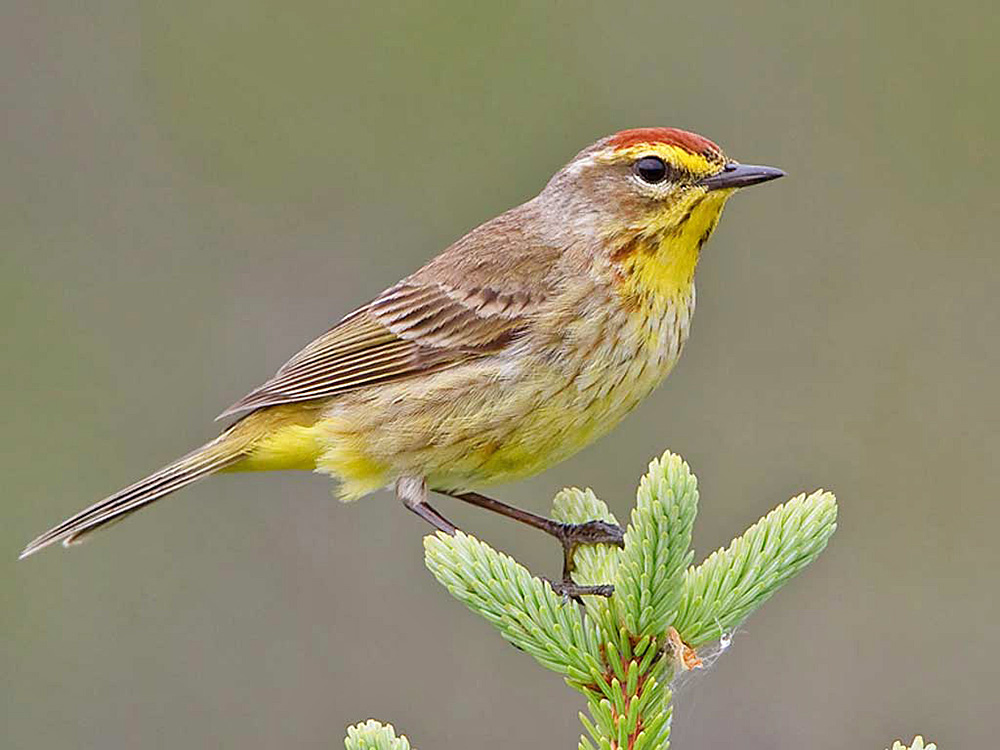The Palm Warbler spends summers in remote bogs and wet coniferous forests. Apart from that, they are common migrants in much of the eastern USA and a very common wintering birds in Florida.
They usually occur in parkland and other open habitats where it picks small insects from bushes, small trees, and the ground.
On this page
Identification
The Palm Warbler is a petite, ground-loving bird with a rich chestnut cap, yellow eyebrow and throat, dingy yellow rump, and lemon yellow under the tail. The rest of the upperparts are grayish-brown with a hint of wing bars, and the underparts have varying amounts of fine, chestnut, and dark streaks.
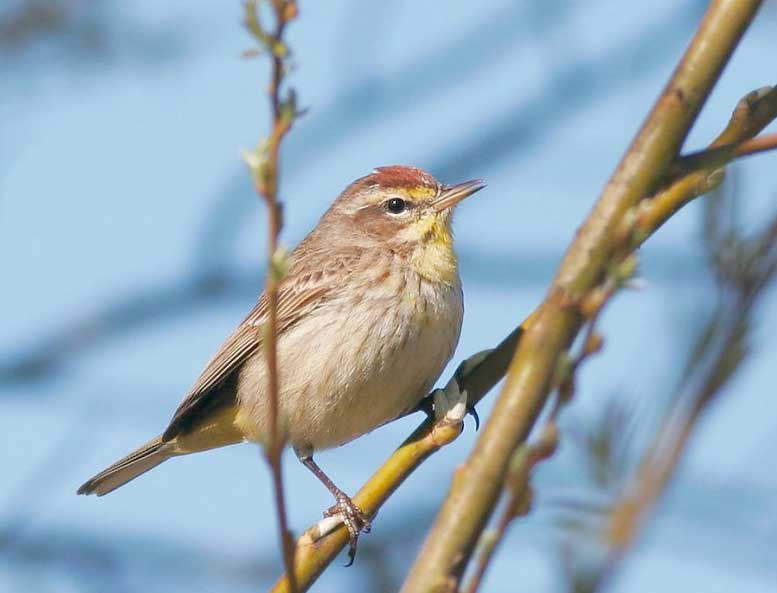
Palm Warblers that breed east of Ottawa have entirely yellow underparts, while those that breed west of Ottawa only have yellow on the throat. Both of these are often referred to as “Eastern Palm Warbler” and “Western Palm Warbler” respectively.
During the winter, this species shows much less yellow on the eyebrow and underparts, and has mostly gray-brown plumage with some dull streaking below. However, it still shows white crescents above and below the eyes, and yellow on the rump and under the tail.
Unlike many warbler species, both sexes of the Palm Warbler look alike.
The Palm Warbler has a rather short, trilled song and also makes sharp, chipping calls.
Food
The Palm Warbler mostly feeds on insects, especially small beetles, flies, leafhoppers, and a variety of other bugs including small larvae.
They catch most of their insect prey by picking them from the ground or making short flights to snap a flying insect from the air.
This warbler also gleans larvae and many small insects from the vegetation of low trees and bushes, and is constantly on the move as it actively flits through vegetation in pursuit of insect prey.
On their wintering grounds, they vary their diet a bit with some seeds and small berries, especially bayberries, and can feed on nectar at flowering Hawthorns, Agave, and various other bushes and trees.
Although the Palm Warbler can forage in any number of open habitats, it may prefer the edges of marshes, lakes, and other wetlands, wet grass, and burned areas. These and some other situations tend to host many of the small and juvenile insects that make up an important part of the Palm Warbler’s diet.
In common with many warbler species, the Palm Warbler often forages in company with other warblers and small birds, probably to benefit from enhanced predator detection associated with mixed flocks (it’s much easier to detect hawks, and predators when more birds are watching for them).
Nesting and Eggs
The Palm Warbler builds a small, soft, cup-shaped nest on the ground, usually at the base of a small conifer or shrub in a bog or similar open situation that has a dense layer of shrubs and a few scattered trees near the forest.
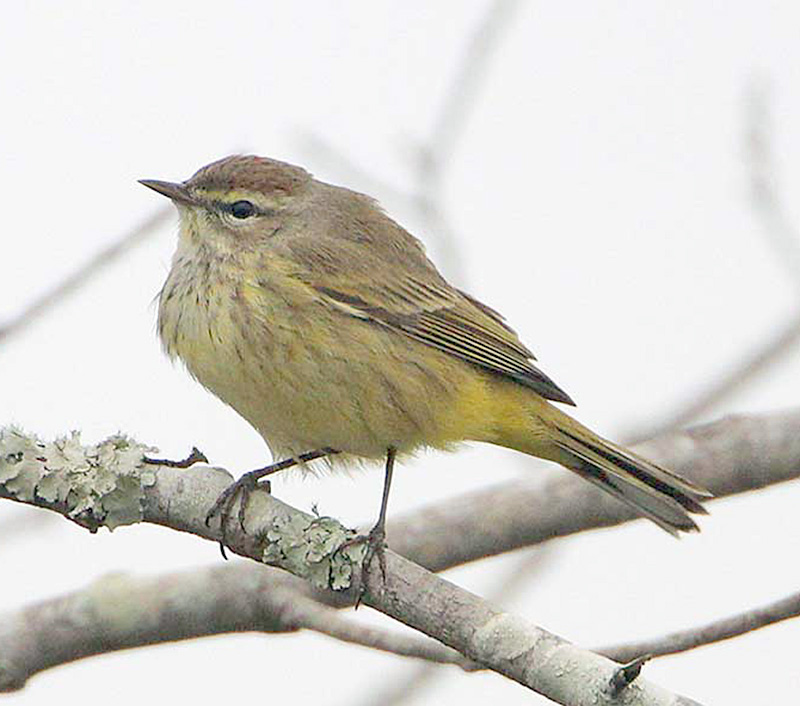
Photograph © Greg Lavaty.
Palm Warbler’s nest is very well hidden and constructed with rootlets, bits of soft bark, sedge, grasses, and other vegetation. The inside of the nest often has hair from horses or deer, and feathers from Spruce Grouse, owls, American Robins, or any number of other bird species that live in the same area. The diameter of the nest can be from 3 to 4.5 inches and one to one and a half inches deep.
This warbler species lays a clutch of four to five, white or cream-colored eggs with brown or purplish blotches on the rounded end of the egg.
The male brings food to the female as she broods the eggs for around 12 days, then, after they hatch, both parents feed the young.
Given the remote areas where this species raises young, very little is known about egg weight and other aspects of breeding. Even so, we can safely assume that the eggs of the Palm Warbler are similar in weight to those of the Yellow Warbler, around 1.43 grams.
Current Situation of Palm Warblers
During the summer breeding season, the Palm Warbler lives in bogs and other open situations with a dense shrub layer and scattered conifers in the boreal zone from Northern Territories and Manitoba, Canada, east to Nova Scotia, and south to Maine and northern Wisconsin.
During migration, these birds can be seen in a wide variety of open and semi-open habitats including parks, golf courses, open woodlands, beaches, and other similar situations.
In the winter, it continues to use similar habitats along with residential areas, mangrove forest, scrubby tropical forest, and open pine woodlands in the southeastern USA, Puerto Rico and other islands in the Caribbean Sea, the Yucatan Peninsula, and, rarely, in parts of Central America.
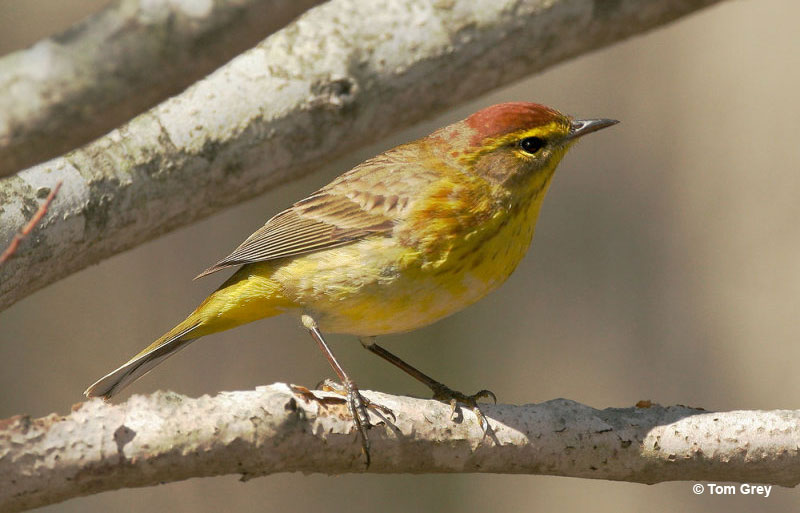
© Tom Grey
The Palm Warbler is common, not endangered, and may even be increasing. Within its regular range, it continues to be an easy bird to see despite it being one of the species most frequently killed by collisions with towers and other lit structures during migration.
Other possible threats include peat extraction from bogs and deforestation of boreal forest.
Facts
- The Palm Warbler may constantly wag or bob its tail to give the impression to predators that it is healthy, knows that the predator is present, and is, therefore, not an easy bird to catch. Tail wagging may also help flush insects out of their hiding places.
- Palm Warblers don’t actually live in palm trees but are common wintering birds in Florida and other places where palms are abundant.
- One of the closest relatives of the Palm Warbler is the Black-Throated Blue Warbler, a warbler that also prefers low vegetation but looks and sounds completely different.
- The eastern subspecies of the Palm Warbler mostly migrate along the eastern coast and winters in the southeastern USA, whereas the western subspecies of the Palm Warbler migrates mostly west of the Appalachians and winters on Caribbean Islands and in the Yucatan Peninsula.
Similar Species
Palm Warblers in breeding plumage have a distinctive chestnut cap but in non-breeding plumage, they can look somewhat like a few other warbler species.
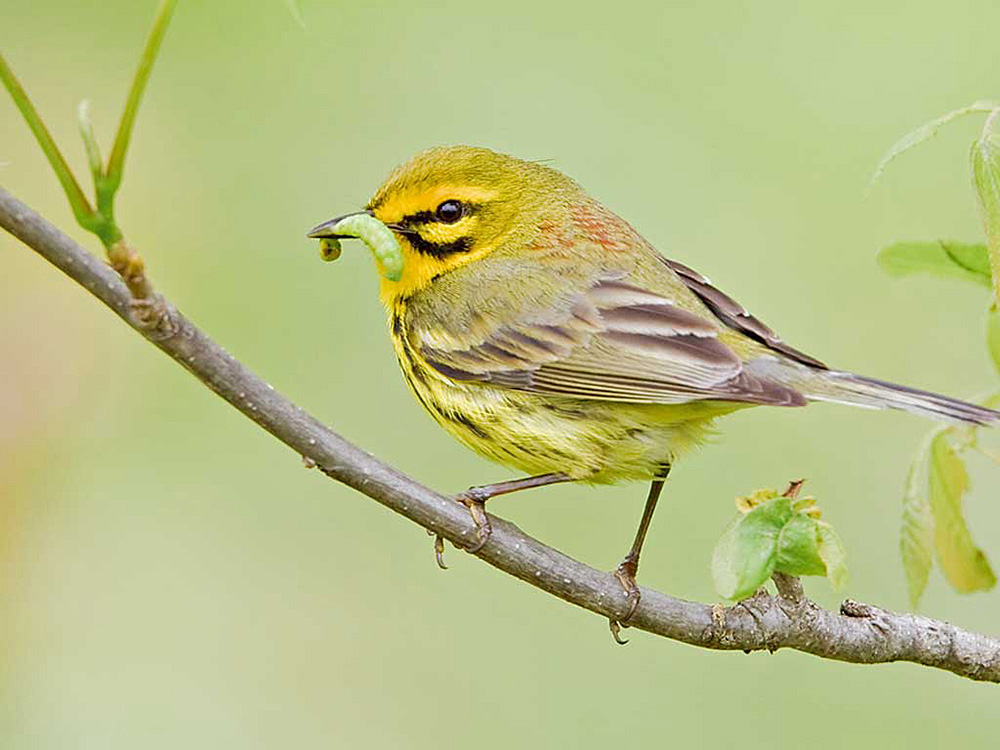
Prairie Warbler. Photograph © Glenn Bartley.
The Prairie Warbler is similar and also forages on and near the ground but has a stronger facial pattern, thicker streaks on the sides, white under the tail, and lacks a chestnut cap.
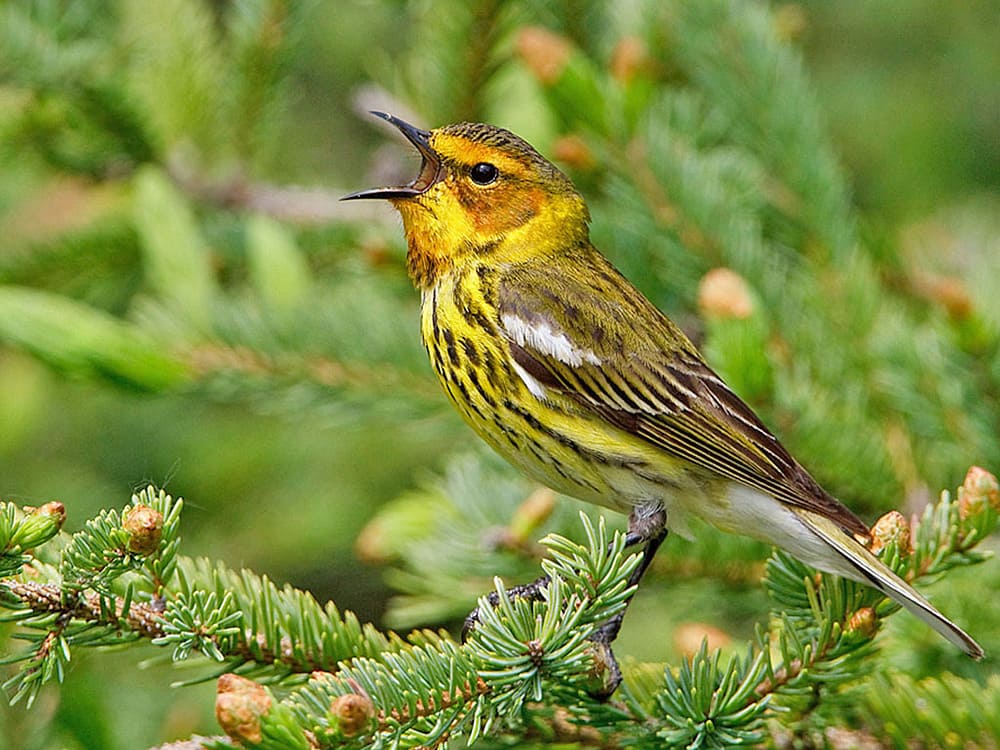
Cape May Warbler. Photograph © Glenn Bartley.
While the breeding male Cape May Warbler looks quite different, other plumages of this small warbler can be tricky.
However, they always differ from the Palm Warbler by lacking yellow under the tail, and usually having more heavily streaked underparts.
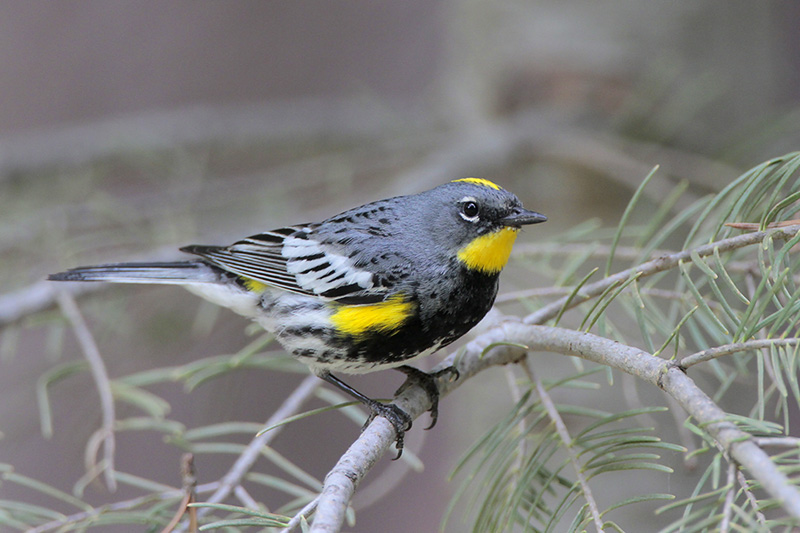
Yellow-rumped Warbler
The Yellow-Rumped Warbler differs from the Palm Warbler by having either blue-gray plumage (adult males), or white under the tail, prominent wing bars, and thick, dark blotches on each side of the breast.
Frequently Asked Questions
Are Palm Warblers native to Florida?
Yes, but only during migration and the winter months. The Palm Warbler is one of the most common wintering bird species in Florida.
Are Palm Warblers rare?
No. Within its normal range, this warbler species is common and easy to see.
How did the Palm Warbler get its name?
The Palm Warbler was named by Johann Friedrich Gmelin, a German naturalist who lived during the late 18th century. The specimen he used to describe the bird came from Hispaniola, an island he believed had many palm trees (it does but Palm Warblers aren’t tied to them).
Do Palm Warblers migrate?
Yes, Palm Warblers migrate from boreal forests in Canada and the northern tier of the USA to the southeastern United States, the Caribbean, and to the Yucatan.

